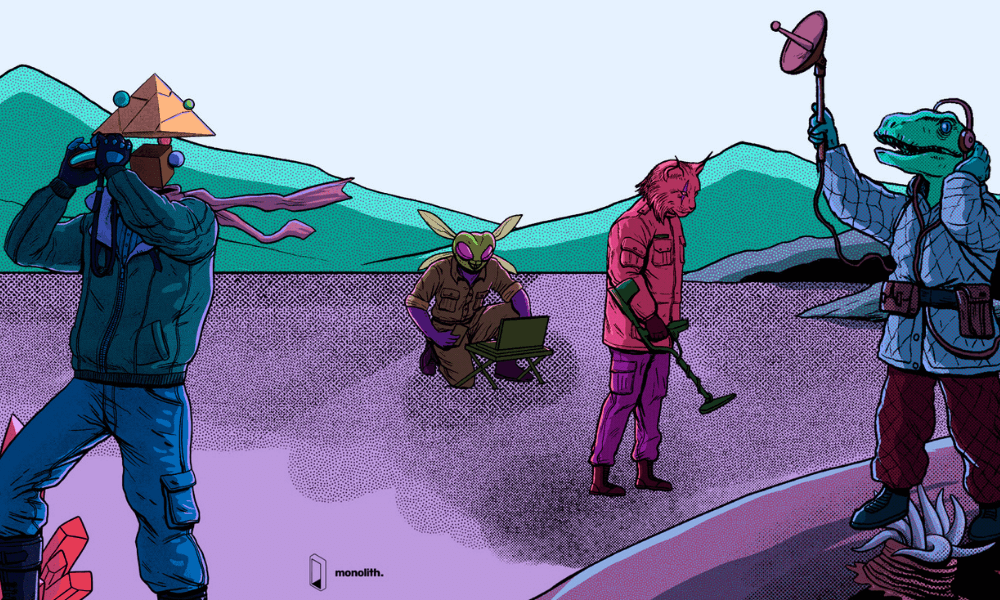
There is no rule book on how to assess an NFT valuation. The metrics you use for evaluating private companies or conventional investment vehicles such as shares are simply not applicable to NFTs.
Usually, the payment rolled out by the last buyer gives some indication of the value. For NFTs, however, it is hard to guess what the next buyer might pay, depending on their estimates.
Most buyers lack the skills to ascertain the value of NFTs logically and base their quotes on guesswork. For sellers too, it is hard to determine what they might end up receiving for the tokens they hold. Over time, the value of NFTs is driven by a perception over which both buyers and sellers may lack any control.
Recent Topic
Ethereum's 'Consensus Layer' Contract Hits 10M ETH Staked
Chainalysis Launches Free Sanctions Screening Tools
The Future Of Work: Companies Open Offices In The Metaverse
An example can bring home the point even better. An artwork NFT might be in great demand for a certain time, with possible buyers assuming it is rare and expecting to derive value in near future. Then, all of a sudden, they may discover that the digital image is available on the Internet for free and there might be no buyers left for the NFT.
Artwork NFTs of renowned artists or tokens associated with tangible assets of repute might have defined values. In most cases, however, investors and traders find it hard to determine what an NFT is worth.
Demand for an NFT is directly proportional to its perceived scarcity but how can you tell how rare an NFT is? Unique artworks from renowned illustrators might make good examples of rare NFTs as will the tokens minted by top-grade celebrities.
Some rare game items can also successfully call for this category. Rarity factor brings in plenty of intrinsic value to these NFTs.
An immutable proof of ownership gives the holder of the NFT a sense of distinction and subsequently, value. Everyday’s The First 5000 Days by Beeple and Jack Dorsey’s first NFT are prime examples of NFTs with a rarity element.
For figuring out how to evaluate NFT projects, utility emerges as a key parameter. To carry value, an NFT needs to have a utility in a real application. For instance, NFTs could be used for tokenizing real estate, precious metal and even securities; to represent virtual land or game assets and in many more ways.
The NFT world is still at a nascent stage and as it matures, new innovative use cases are sure to emerge.
Right after minting, an NFT draws value from its inherent characteristics. Over time, the value accrues depending on the utility and community strength of the underlying project. Decentraland NFTs, which refer to virtual land plots in the project, are an excellent example of such tokens.
NFTs associated with real-world objects draw an element of tangibility. Clubbed with ownership immutability on blockchains, it creates an immediate value in tangibility. NFTs can be effectively used to underline ownership rights and eliminate instances of fraudulent activities.
The practical use of NFTs in the projects in which they are involved has a bearing on their value.
NFTs holding tangible value are the perfect fit for short-term as well as long-term trading. Some NFTs, like tickets, might have expiry dates, while others, such as those representing real estate, can cultivate more value over time.
A key factor in the NFT value proposition is interoperability, i.e., the ability to use the tokens in different applications. For instance, if the same weapon can be used in different games, there are more chances of the token accruing value.
|
|
How the nonfungible tokens work on different blockchains is always going to make transactions simpler.
It is hard to realize interoperability, however, as developers have to build a vast network of applications on which the tokens can be used. A set of attractive use cases help infuse interoperability of the NFT. Another strategy developers could follow is to develop partnerships with other projects to bring benefits to people who own their tokens.
The social proof associated with the project behind an NFT is one of the decisive factors that determine the NFT’s value. Checking their profiles on social media platforms like Twitter and Instagram can help one gauge their acceptability. If the numbers lie low, it indicates they haven’t yet been able to create a solid ground for themselves. - Cointelegraph.